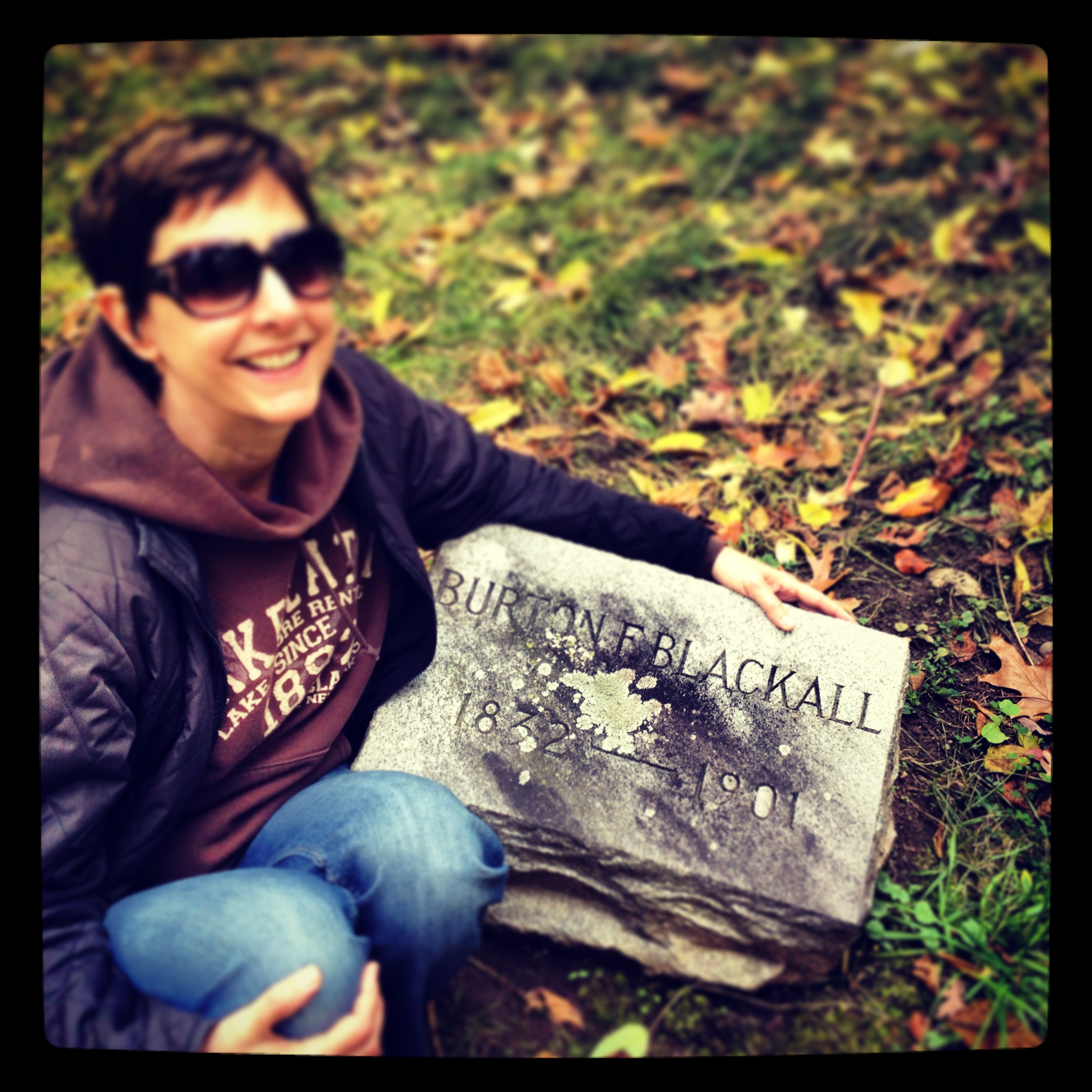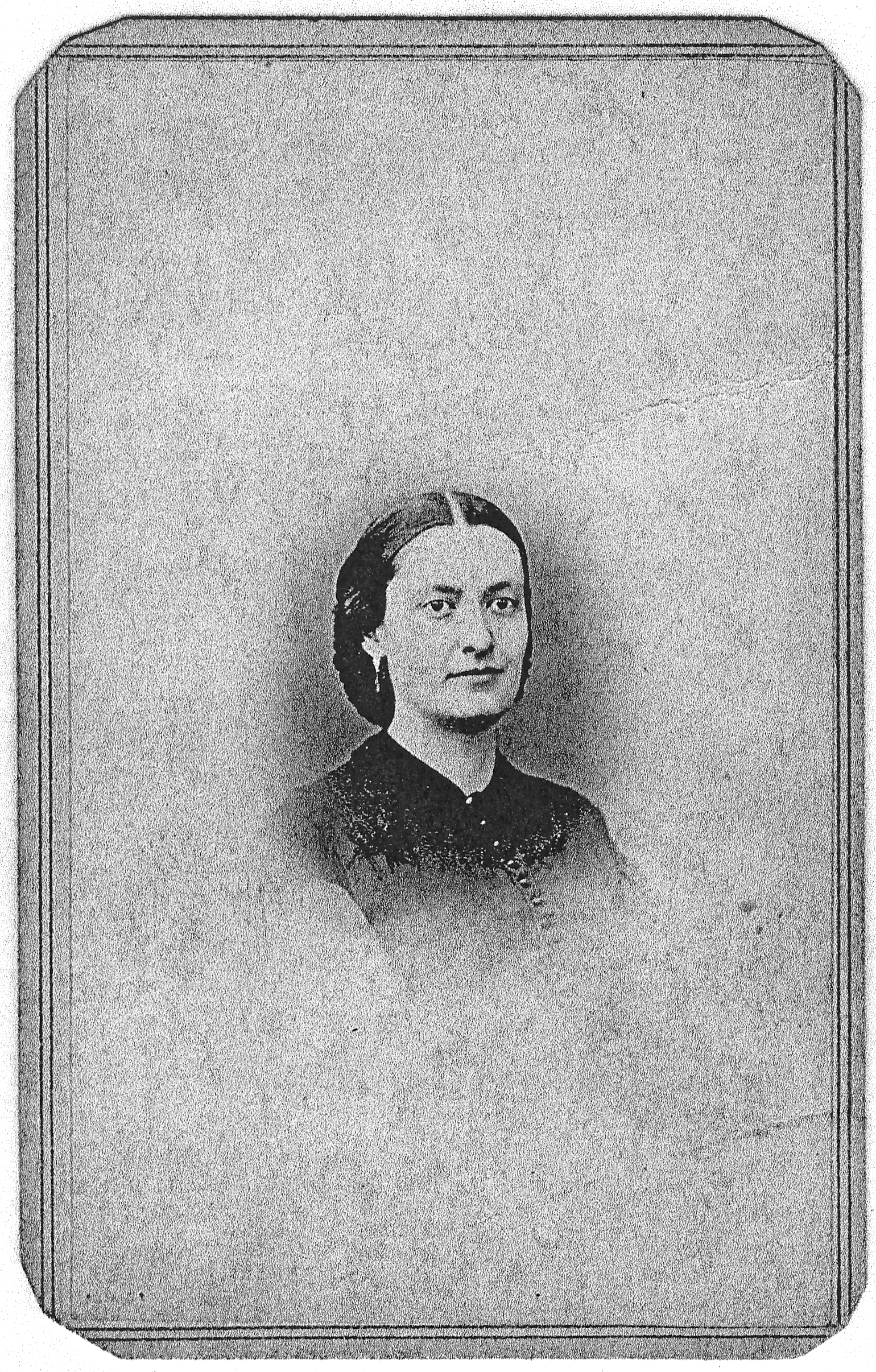Boomtownlinking past & present
Welcome to my passion project: writing about people, places, and ideas from the past that echo in the present. |
|
|
Found Frank today! Burton Francis (Frank) Blackall was the dad in the Blackall family. He’s been hiding from me in Mount Hope Cemetery in Rochester. I knew what area he was buried in, but his headstone has eluded me for years. Early on, Frank used his position as a telegraph operator to support Frederick. In 1859, the abolitionist was out of town when he learned officials were looking for him in connection with John Brown’s raid on Harper’s Ferry. Frederick sent a telegram to Frank, then 26 years old, “a friend and frequent visitor at my house, who would readily understand the meaning of the dispatch: ‘B.F. Blackall, Esq., Tell Lewis (my oldest son) to secure all the important papers in my high desk,’” he wrote in his third autobiography. “I did not sign my name, and the result showed that I had rightly judged that Mr. Blackall would understand and promptly attend to the request.” Frank and Frederick had a long friendship, even after Douglass moved to D.C. Photo by Gia Lioi Originally published 10/20/2013
1 Comment
When Frederick Douglass moved from Rochester, NY, to Washington, DC, in 1872, he left behind a lot of friends and supporters. But he didn’t lose touch. In fact, his moving away means we can see the nature of those relationships more clearly through the letters he exchanged with them.
Frederick and his second wife, Helen Pitts Douglass, corresponded with the Blackalls for many years. For the most part they are cordial and chatty letters about everyday life - the weather, the health of family members, invitations to visit. They describe family gatherings - Fred playing violin with his grandson, the Blackalls vacationing on Frontenac Island on the St. Lawrence River. Some highlight big events, like the Chicago World’s Fair and President Garfield’s election, and others comment on the politics of the day. Most of the letters between Burton F. (Frank) Blackall and Frederick were about business; Frank looked after rental properties that Frederick owned back in Rochester. Little has been written about Douglass the real estate investor, but he owned a fair number of properties. With these letters, it’s more than just his name on a plat map or deed. They show the typical wranglings of being a landlord - finding good tenants, fixing old pipes, collecting overdue rent. So far the letters I’ve tracked down are from Frank to Fred and show the mild frustration Frank went through being the go-between: “I have held this money for several days in hopes that I could collect the rent due you from the Bond Street property and remit that also, but I am sadly disappointed as I know you will be also,” Frank wrote on Sept. 29, 1877. “The truth of it is that the tenant is a ‘dead beat.’ We will never be able to collect a cent from him. He is all packed up and ready to move out. The sooner he goes, the better.” Some things never change. I’ll write lots more on all the great letters I’ve found! Originally published 9/27/2012 Filed under frederick douglass rochester ny Helen Pitts Douglass Blackall
Gertrude Blackall was a businesswoman—this much I know—a woman who worked for herself as a stenographer at the turn of the last century. In this she was unique. Stenography back then was a man’s world, as was most of American commerce.
Gertrude never married, and if you never married in those days, unless you were of a certain class, you worked. She was middle class. (How wealthy the Blackalls were remains another mystery, but they were comfortable enough to afford vacations and own their own home. And I’m guessing their financial support was one reason they knew Susan B. Anthony and Frederick Douglass.) Gertrude lived at home as an adult, as did her sister Florence, who also never tied the knot. The first mystery of Gertrude: How did she come to open a business? And what did her business look like? Did she employ others? Where was she educated? Was it considered prestigious to have offices in the Powers Building? And while we’re at it, did she know Martha Matilda Harper, who opened her own salon empire in the Powers Building around the same time? The second mystery of Gertrude: How active was she in the suffrage movement? Several letters to her from Susan B. Anthony show that she helped the famous suffragist sort mountains of paperwork on a number of occasions. Maybe she transcribed some things for her; I’m not sure. “It was very good of you to feel that you wanted to help me see through the piles of unanswered letters – but I felt all the time you couldn’t do so, without neglecting your own more important work,” Susan wrote her on Christmas Eve in 1897. “The great good that came to me from the attempt was the coming to know and appreciate you more than ever before, for which I am very grateful – I had always looked upon you a heroic young woman who had fought through hard battles and gained a most enviable position in your profession – but it was left to those few morning hours to teach me the lesson of your deeper and higher qualities. “So we are both the better for the little experience, and I trust we may in the future see and know more and more of each other.” The letter is one of a few small windows I have to peek into Gertrude’s life—and into Rochester at an important time in its history. Originally published 8/21/2011 Maybe I read too many Trixie Belden mysteries as a kid.
There’s just something about unraveling the mysteries of the past. A clue drops into your life, stirring your curiosity. Next thing you know, you’re googling day and night, amassing links to reference later, copying and pasting tidbits from far-flung websites into Word docs, promising yourself you’ll organize it all – later, later, when you have time. That time has come. For about 10 years I’ve been lazily looking for information on a 19th century Rochester, NY, family called Blackall. I have website printouts, copies of letters they wrote, obituaries and the like. Introducing: Burton, Sarah, Gertrude, Florence, Minnie and Robert. Why they have stuck around is beyond me. I guess they want me to tell their story. I doubt their story, like most, is a true mystery. I don’t expect to uncover anything history-altering. Their time on Earth has simply been long forgotten. Still, you never know… Perhaps the way it tugs at me is the mystery; it is the part of the story I don’t yet know and need to tell. I’m creating this blog to crystallize what I already understand about the Blackalls and to connect to others who may know more. Burton Francis (known as Frank) and Sarah (Colman) Blackall married in 1853 and moved to Rochester in 1858. They and their four children were close to Frederick Douglass and his family, and Sarah and daughter Gertrude were active suffragists who were friends with Susan B. Anthony. In coming posts, I’ll write about what I know and muse about what I don’t. Here’s what I hope: that the process of unraveling and sorting my own notes will lead to a clearer picture of these people and the impact they had during their time in Rochester. Originally published 3/13/2011 Filed under Blackall Frederick Douglass Susan B. Anthony Rochester NYabolition suffragists |
Details
AuthorThese are stories of people, places and events of the past that seem to jump out at me. Maybe they've been waiting for someone to tell them! Archives
July 2020
Categories |


 RSS Feed
RSS Feed